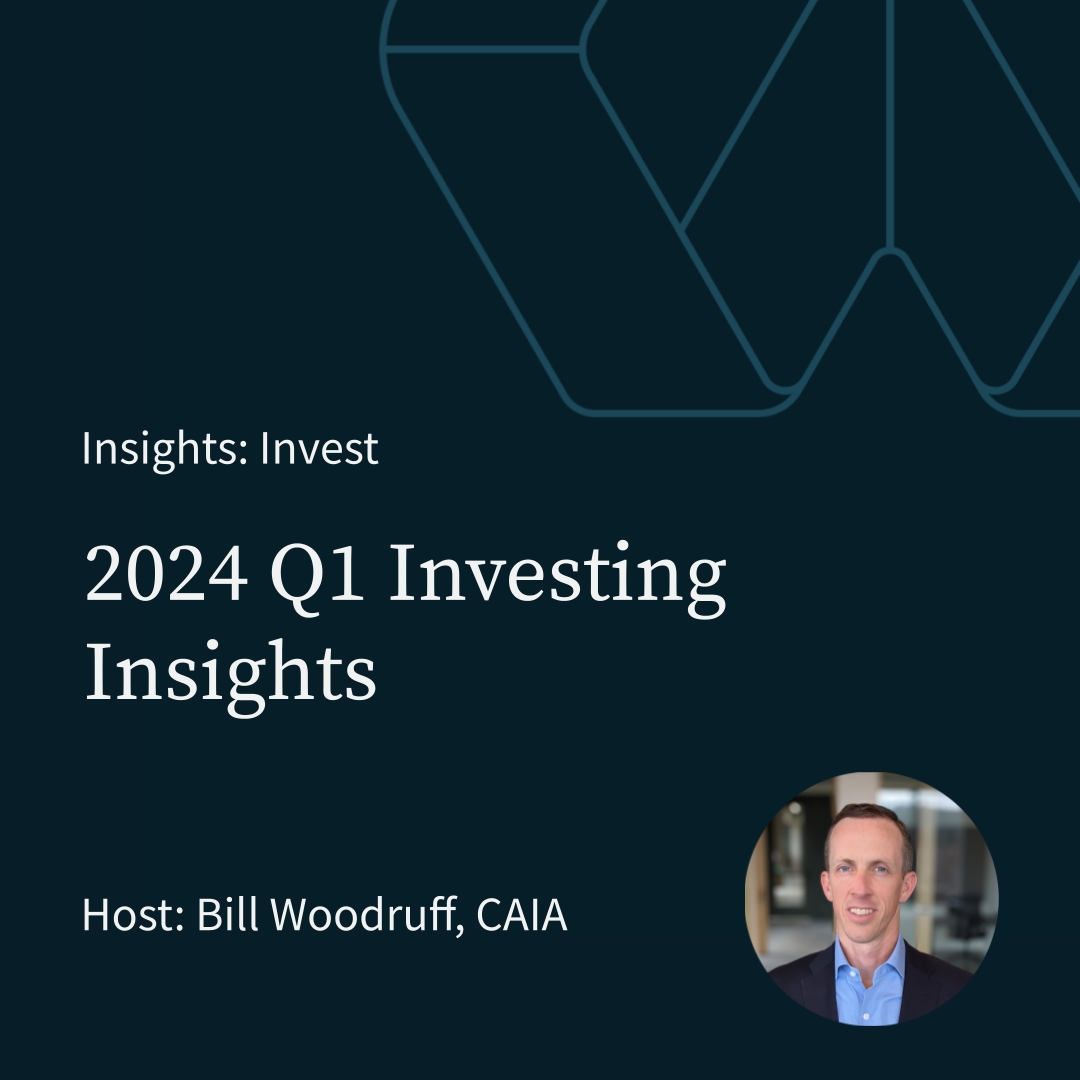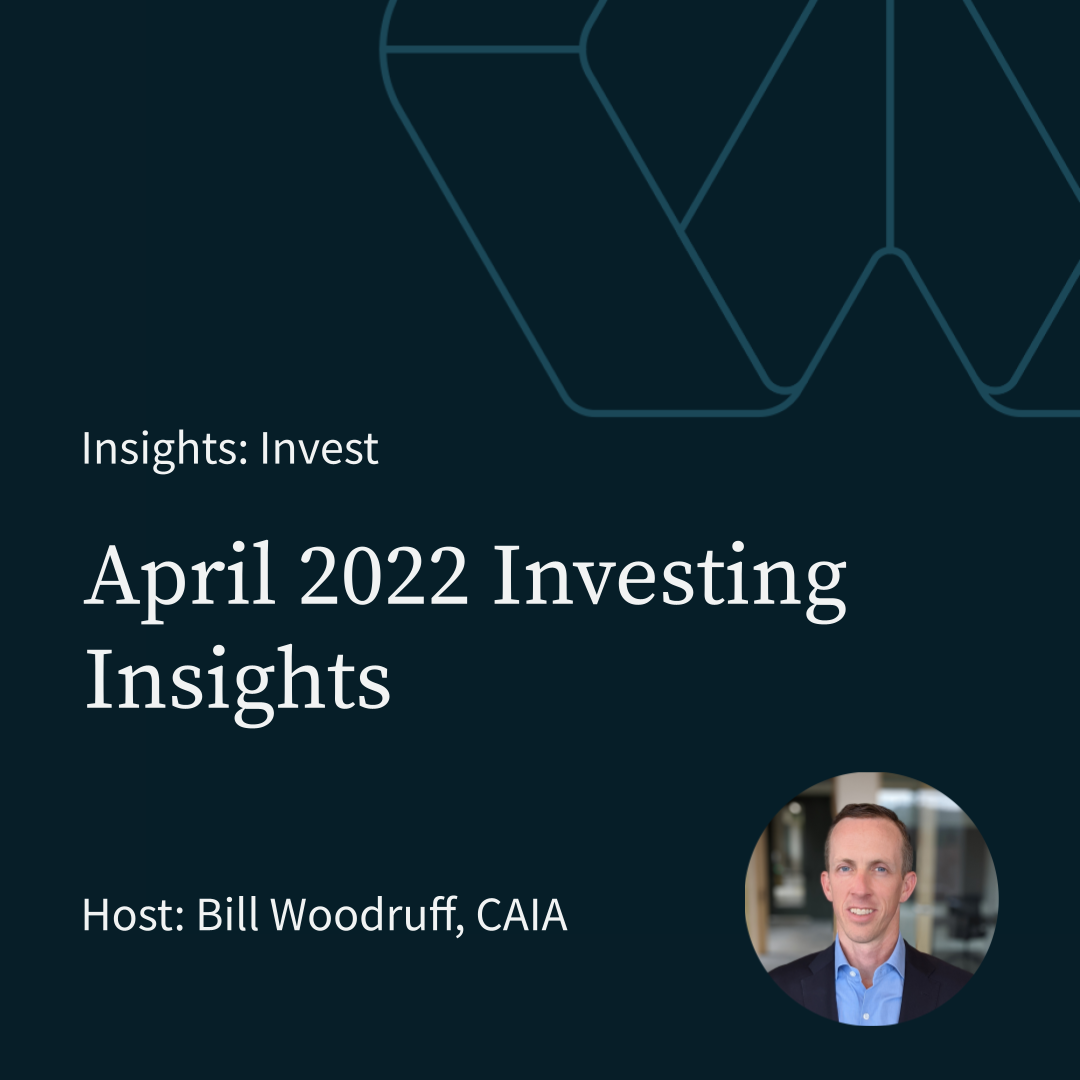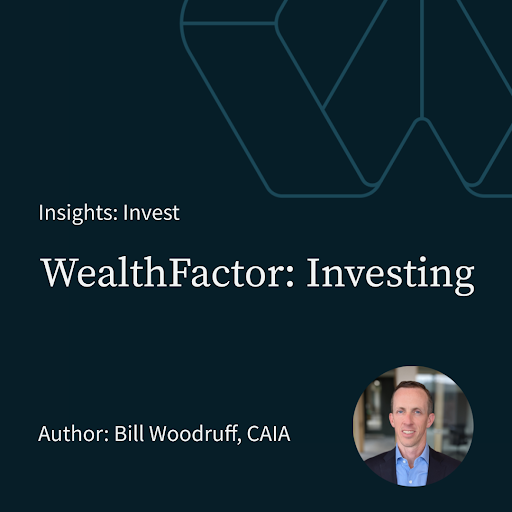Webinar Replay: Introduction to Direct Indexing
indexing, index, portfolio, clients, investment, direct, costs, creating, etf, tax, exposures, mutual fund, based, robin hood, investing, investor, trading, largely, etfs, factor
Transcript
Good afternoon and welcome. My name is Bill Woodruff. Today I'm going to share some introductory thoughts on a newer, and what I think is an up and coming area of the investment industry, which is direct indexing. Before I get too far in, I'm going to say a few words for compliance purposes. This call is for informational purposes only and may be recorded statements made during this call or the opinions of the speaker and are subject to risks and uncertainties, some of which are significant in scope. And by their very nature beyond the control of wealth factor, there can be no assurance that such statements will prove to be accurate, and actual results and future events could differ in a material way from set statements. Historical results are not necessarily indicative of future performance. For those of you who are don't know me or are less familiar then involved
01:00
in investing for over 20 years now, I have a diverse career in the industry started doing by being involved with actually a hedge fund doing trading and building trading systems also have spent time doing investment manager research and due diligence, not just at
01:24
hedge funds, but also private equity, a little bit of private real estate private debt. So very diverse experience set there. In 2011, I launched a mutual fund in 2014. I sold that mutual fund business line to the public company fortress Investment Group and spent some time with them. A lot of my background has been dealt with as been providing investment related services or products to other investment professionals. In a lot of what I've seen in the industry. I've never felt very good
02:00
About I've seen layers of management, complexity and layers of fees, most of which aren't benefiting clients. And that's what well, it largely led me to the creation of and founding of wealth factor in 2017. Wealth factor is a Lake Oswego based investment advisor. We do customized plan oriented investment advice solutions for our clients. We manage custom portfolios that are primarily comprised of index based exposures to stocks and or bonds. Accounts are held in our clients name, and at independence, third party custodians, and we charge a point three 5% fee for the entirety of our services. Just as a brief introduction to how I view the world from an investment philosophy perspective. We operate under an approach that's called risk smart that has three component parts.
03:00
The first is called portfolio smart. And this is really a reference to the efficiency of how you get to your exposures and the efficiency of the investment process and strategy. And it's largely about what you avoid as an investor. So I look at the attempts to pick and time security sectors markets as largely inefficient. I look at the same thing in regards to layers of management, or complex investment structures and strategies. The next part is be smart. And today's topic we'll talk a little bit about cost of getting to your exposures, but it's all factors really centered around the idea that if you're providing an investment related service and your fees are high, you're really forcing yourself into a position where your investment solution or your investment advice, by its very nature needs to take more risks, which isn't really in nobody's best interest. And then the
04:00
The last component of being smart is being taxed smart. Taxes are oftentimes an afterthought by the average advisor. But it's my opinion that taxes and Tax Management is actually one of the highest areas where an advisor can on each individual client's custom solution, add the most value. What is direct indexing? Well, here's an example to kind of explain what the process we're strategy of direct indexing is. Suppose you invest in an ETF or a mutual fund that tracks the s&p 500 index. In this example, in this case, your assets are commingled with the assets of others. The assets are managed by a management firm that sponsors that ETF and does the trading administration that's necessary. In contrast to that common structure. A direct indexing strategy bypasses the fund structure
05:00
Using an account in a client's name purchases individual securities associated with an index on behalf of the end investor or that particular client. In this case for this example, the direct index would hold all 500 stocks in the s&p 500. Theoretically, the returns from buying the individual stocks will be substantially similar to the returns produced by that similar fund that's mimicking that same index, mutual funds and ETFs offer and have been innovations in their own right, easy access and affordable access for smaller investors to a broadly diverse portfolio. And we've seen in in the ETF space and to a lesser extent the mutual fund space, you know, a race towards very, very low fees if not zero management fees in some of the simplest index based funds in the last several years.
06:00
Direct indexing has become far more accessible. Direct indexing has been around for a long time. But up until really the last several years, it took a fairly substantial sized portfolio 510 $20 million or more, or it to make sense relative to buying mutual funds or ETS? Well, in the last several years, there have been a handful of elements that have made it possible for somebody like myself with a trading system design implementation background to create processes and systems to do that implementation. We've also seen a little bit about order here, increases in speed and power of computing, as well as reduction, the cost of getting to those things that make it easier to to create and utilize these sorts of systems. And then also, a big factor is the reduction of commission costs. We're seeing Robin Hood's getting a ton of attend
07:00
Right now for zero commissions. But if you're paying attention, you're also seeing interesting articles that are highlighting their record, income and profit. And so, you know that as an as a student of the industry would discourage anybody from using Robin Hood for the following reason. And that's execution quality. Robin Hood's not offering their services for free, they're making money in other ways. And in terms of implementing a direct indexing strategy, and what's caused it to become more accessible is the accessibility of execution algorithms. And so a combination of overall trading costs coming down and that doesn't just mean free Commission's because Robin Hood example is a reason why you probably would prefer to pay some small commission per trade but yet have high x
08:00
Quality, which is now again accessible thanks to execution algorithms. So why might somebody be interested in direct indexing? Well, in some cases, it removes a layer of costs. I mean, theoretically, there are ETS to have little to no cost. Most indices that I recommend to clients will have even in large cap, large companies in the US at least 15 basis points of fees. And so if I'm providing my service for 35 basis points, you know, 15 basis points of that potentially is being avoided just by not outsourcing to an ETF, or don't use mutual funds, but a fund that 15 to and on the small cap side it can be 20 to 30 basis points. So, removing that layer of costs as a potential reason to direct index. The second is customization and this can mean the motives for customization can
09:00
It'd be different for lots of people. And so one example is somebody might be, you know, very, you know, have a high degree of sensitivity to impact. And so you can with direct indexing, you can filter out companies that might not might be less socially responsible, you have control of the overall factor dynamics of a portfolio. And so I use a index that actually is not constructed based on the size of companies, or a market cap weighted index, which is likely the most, which is the most common type of index space fun, but use something that might select it's an index that might be building its portfolio based on different things, what the industry calls factors, which might be valuation, quality, size, etc. And then another another potential application in regards to customization is as investors go from the accumulate
10:00
Phase two approaching retirement or starting in retirement. The debtor faces some difficult challenges right now, in regards to creating income in and especially in safe ways. And so yields are at historic lows, which creates unique challenges in that regard. And so what one could potentially do, and that's something I've done with client portfolios is filter out, take my index and filter out companies that don't pay dividends, which would increase the average yield or dividend yield of that index. Clearly, as you do customized variations of an index, the deviation or difference in your results or performance will be higher.
10:52
Based on my experience, that it has an equal probability of being positive versus negative. I think the key to
11:00
What I would call evidence based investing or passive or index based investing is the consistency implementation of your approach staying disciplined and saying this is my investment plan. This is the way I'm
11:15
building my portfolio and I'm going to consistently apply that I'm not going to try to time into being in dividend stocks now or not in dividend stocks at a particular time. It's really identifying what's the optimal, you know, considering all elements tax,
11:32
ability to take risk, need for income, creating that optimal portfolio and staying disciplined in its implementation. The last and probably the biggest motivator as I when I make recommendations to my clients about potentially using direct indexing as the tax control when you own an ETF or an or any kind of fund. You have really one tax decision. You\
12:00
Sell it or you don't. Whereas if you take a direct indexing, if you choose to get that same or substantially similar exposure through direct indexing, you now have potentially hundreds of individual tax decisions. And those can so creating an opportunity to be proactive in in the management of your tax and so if you have a year where you've your maybe a higher income or you have a capital gain from something somewhere else, you can go actively harvest losses to reduce the tax liability in the cheer. And while taxes and tax code is built like a moving target, and subject to future increases, I generally look to try to push out paying tax as far as I can. In most cases, obviously there are exceptions in each individual's tax situation. Planning is is unique, so worth noting that by\
13:00
Through positional Tax Management, you can also defer gains as well. So avoiding taking the gain in even just the difference between selling December versus selling in January might shift the tax liability in a fair, fair amount of time. So there are like everything in investing and really in the world can important considerations and potential limitations to direct indexing. One and I felt this with clients is if you're increasing the number of holdings in a portfolio, and so you know, and I'm, you know, one of the biggest jobs that I have with a client is helping them avoid making investment mistakes which are oftentimes linked to behavioral biases that we have and when it when there is more information that isn't always good in terms of identifying something. For example, Goldman Sachs or Wells Fargo.
14:00
Whomever has certainly had, you know, a fair amount of negative media attention, you know, an investor might see Oh, I own that. And the process of owning it is just simply part of the process of owning, you know, a very diverse basket and and that might receive an undue amount of attention relative to what's important in a successful outcome, and creating and attempting to create a success successful outcome. Having a significant number of additional holdings in the portfolio can shift the focus away from what matters most in working with clients. I do do my own quarterly or potentially monthly in certain cases, summary reporting, and we'll generally summarize each direct indexing based allocation up into a single line item for overall reporting purposes. Just like you might see a single ETF or fund you are going to see an increased trading cost. There's absolutely
15:00
efficiencies of scale for large funds ETFs they pay on a per dollar basis per year, far less than you will, as a direct index or really no, regardless of the size of your portfolio. If you're saving 15 basis points, versus owning the each, some part of that is going to go to trading costs, you know, generally, my passive approach to investing, you know, there's some costs on the front end to establish the portfolio. And then annually, most of the costs can be attributed to maintaining exposure to structurally to the index, as well as the tax motivated, selling, there's a bit of greater operational complexity and this creates perhaps in slightly increased potential for errors. So worth noting that, and then lastly, and this is absolutely something that will shift as I'm providing advice to a client or prospective client
16:00
influences the decision or choice to use ETFs instead of direct indexing. And that's largely tax advantages aren't always useful because of retirement accounts. And so, in retirement accounts, it's really largely dependent on potential cost savings and the motives for customized interest summary ETFs will remain an important tool, but offering direct indexing directly to our clients is one of the many competitive advantages we have versus the average advisor. I hope you found today's presentation useful and informative. If you'd like to learn more, please don't hesitate to reach out. I hope you have a great afternoon.










